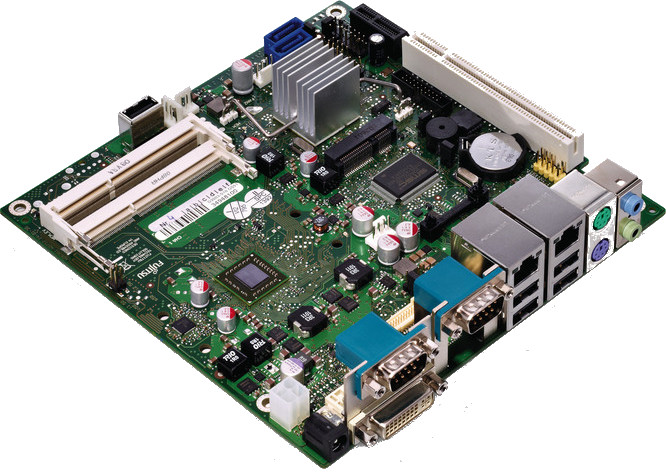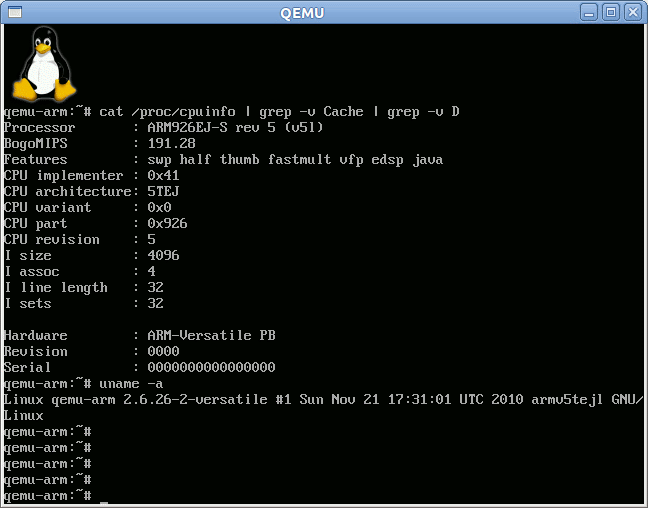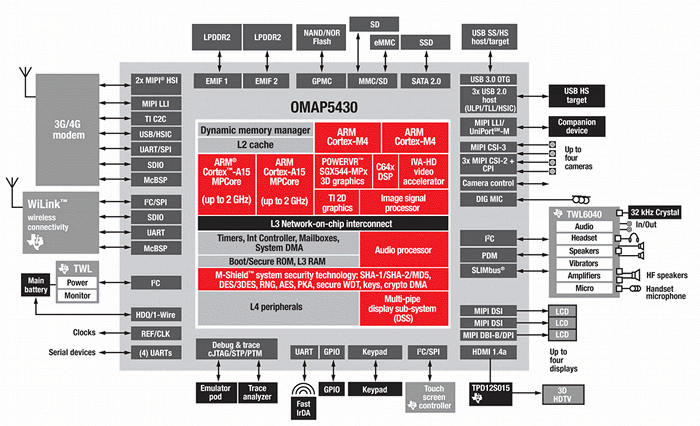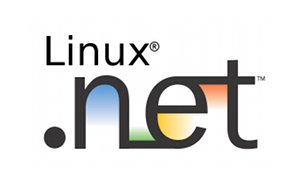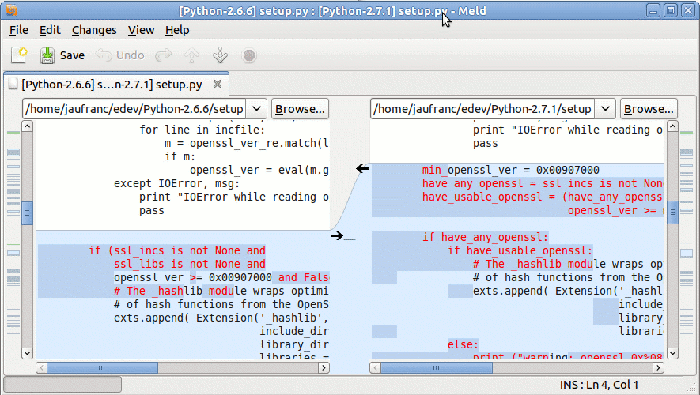AMD announced its embedded processor G-Series at CES 2011. Here are some products that will be soon available based on this platform. Futjisu Mini-ITX mainboards – models D3003-S1 and D3003-S2 The D3003-S1 motherboard will feature an AMD Single-Core T44R (1.2GHz/9W) and the D3003-S2 an AMD Dual-Core T56N (1.6GHz/18W). Both models will have an onboard ATI graphics card with VGA, DVI, LVDS (D3003-S1 only) and diplayport (D3003-S2 only) outputs, HD Audio, dual GbE LAN, serial ATA III RAID, mSATA socket support, USB 2.0, 8 Bit GPIO connector and be designed for fanless operation. Mass production of the boards will start in April 2011. Check the preliminary specifications for details. CompuLab’s fit-PC3 mini-PC Compulab already manufactures the fit-PC2 and fit-PC2i based on the Intel Atom platforms running Linux, Windows XP and Windows 7. The Israel-based company will embed AMD Embedded G-Series processor in its latest fit-PC3 mini-PC. This “miniature fanless industrial PC” […]
Emulate an ARM Plaform with QEMU on Ubuntu 10.10
When developing software for embedded systems, you may need to support multiple architectures such as arm, mips, x86, powerpc, alpha etc.. but you may not have the hardware required on hand to test them. This is where QEMU – a processor emulator – comes to the rescue. In a way, QEMU is similar to VirtualBox, VMWare or Citrix Xendeskop except it can support multiple architectures. I’ll show how to run Debian Lenny ARMEL in QEMU on a computer running Ubuntu 10.10 (aka Ubuntu Maverick Meerkat). QEMU (Qemu-kvm) Installation First install qemu-kvm and qemu-kvm-extras (the latter contains qemu-system-arm): sudo apt-get install qemu-kvm qemu-kvm-extras Let’s check qemu version: jaufranc@CNX-TOWER:~/edev$ qemu –version QEMU PC emulator version 0.12.5 (qemu-kvm-0.12.5), Copyright (c) 2003-2008 Fabrice Bellard Debian ARM Installation in QEMU Create a directory to store the required files for the emulator and download the Debian Lenny ARMEL kernel (vmlinuz) and debian installer rootfs (initrd.gz): mkdir […]
Ziilabs ZMS-05 and ZMS-08 SDK and Development Boards
Ziilabs (originally 3DLABS) is Singapore company, subsidiary of Creative Technology, that provides media application processors for consumers electronics and has offices in the UK, China, USA and Singapore. Ziilabs Media Processors Overview Ziilabs has two media processors: ZMS-05 – A Low Power HD Programmable Media Rich Processor based on two ARM9 core (ARM9-EJS) mainly aimed at smartphones and tablets with the following media capabilities: High compute density SIMD architecture High resolution – decode to 1080p / 720p encode Simultaneous video encode/decode at D1 Wide rage of optimised CODECs and APIs Accelerated OpenGL ES 3D graphics Hardware compositing Advanced image processing 8 GFlops programmable compute ZMS-08 – A HD Media Rich Applications Processor based on an ARM Cortex A8 running @ 1GHz mainly aimed at media players, set-top boxes and digital signage solutions with the following media capabilities: Blu-ray Quality 1080p H.264 Video Decode 1080p H.264 Video Encode 720p H.264 Video […]
Texas Instruments OMAP 5 based on ARM Cortex A15 Core
Texas Instruments announced its new generation of mobile chips OMAP 5 based on the latest ARM core Cortex A15. Press release excerpt: DALLAS (Feb. 7, 2011) /PRNewswire/ — Texas Instruments Incorporated (TI) (NYSE: TXN) announced today the next generation of its popular OMAP™ family: the OMAP 5 mobile applications platform, which is positioned to transform how mobile devices, such as Smartphones, tablets and other mobile form factors are used, making them even more valuable in our daily lives. … The 28 nanometer OMAP 5 applications processors carry on the OMAP family tradition of delivering significant increases in performance and functionality, while lowering power consumption compared to their predecessors. Specifically, they offer up to 3x processing performance and five-fold 3D graphics improvement, yet provide a nearly 60 percent average power reduction compared to a sample user experience on the OMAP 4 platform. Additionally, the OMAP 5 platform’s software is designed for […]
Running .NET applications on Linux Embedded Systems
You may have some applications developed using Microsoft .NET application framework that are running on Windows XP, Windows Vista and Windows 7. .NET for Linux If after spending much effort and time, you have a request to port your application to Linux, you don’t need to rewrite everything thanks to Mono, an open source implementation of .NET framework that can be run in Windows, Linux and MacOS. The development framework is composed of three parts: Mono – An open source, cross-platform, implementation of C# and the CLR that is binary compatible with Microsoft.NET MonoDevelop – An open Source C# and .NET development environment for Linux, Windows, and Mac OS X Mono Tools for Visual Studio – Development Tools to develop and migrate .NET applications to Mono on Linux without leaving Visual Studio. This application can be tried for 30 days and / or purchased. This tools is compatible with Visual […]
Folders and Files Comparison in Linux with Meld
Beyond Compare and Winmerge are tools that can be used to compare files in Windows, but the latter is not available in Linux and the former is only available as a commercial application. One alternative is to use Meld, a diff and merge tool for Linux. This open source program is a GUI for diff2 and diff3 written using pygkt toolit based on Python, Glade and GTK+. This is not as powerful as the two programs aforementioned, but still very useful. It can also compare 3 files at the same time. To install it in ubuntu: sudo apt-get install meld It will still allow you to compare files, directory and merge changes. The file comparison merge function is a little confusing at first, but after a while you’ll get used to it. Meld can also support version control comparison with CVS, SVN, GIT, Bazaar-ng or Mercurial. Jean-Luc Aufranc (CNXSoft)Jean-Luc started […]
Cross-compiling Python for MIPS and ARM Platforms
Python programming language is used in several open source projects such as Sugar OS and Xibo. Let’s see if we can cross-compile it in Ubuntu 10.10 using a mips compiler. I’ll use the instructions given at http://randomsplat.com/id5-cross-compiling-python-for-embedded-linux.html. Let’s download Python 2.7.1 first and extract the source code:
|
1 |
tar xjvf Python-2.7.1.tar.bz2 |
Then run the following command in Python-2.7.1 in order to build some tools for the host:
|
1 2 3 4 5 |
./configure make python Parser/pgen mv python hostpython mv Parser/pgen Parser/hostpgen make distclean |
There is no patch for Python 2.7.1 cross-compilation in the link above, so let’s just try to configure and build it:
|
1 2 |
CC=mipsel-linux-gcc CXX=mipsel-linux-g++ AR=mipsel-linux-ar RANLIB=mipsel-linux-ranlib ./configure --host=mipsel-linux --target=mipsel-linux --prefix=/python make HOSTPYTHON=./hostpython HOSTPGEN=./Parser/hostpgen BLDSHARED="mipsel-linux-gcc -shared" CROSS_COMPILE=mipsel-linux- CROSS_COMPILE_TARGET=yes |
If we don’t use a patch the first error is:
|
1 |
Include/pyport.h:243:13: error: #error "This platform's pyconfig.h needs to define PY_FORMAT_LONG_LONG" |
So I used some older patch to create a new patch: http://www.cnx-software.com/patch/python-2.7.1-cross-compile.patch. You can download it an apply it as follows:
|
1 |
patch -p1 < python-2.7.1-cross-compile.patch |
And repeat the step above to configure and cross-compile Python for mips. Finally install Python in ~/Python-2.7.1/install for example:
|
1 |
make install HOSTPYTHON=./hostpython BLDSHARED="mipsel-linux-gcc -shared" CROSS_COMPILE=mipsel-linux- CROSS_COMPILE_TARGET=yes prefix=~/Python-2.7.1/install |
After that copy all necessary files in ~/Python-2.7.1/install to your […]
Ayuda Splash Digital Signage Player Becomes Open Source
Ayuda Media Systems announced OpenSplash – a free, open source digital signage player at ISE 2011. Press Release Excerpt: Ayuda Media Systems (“Ayuda”) announced today at ISE 2011 that it will be open sourcing its Splash Digital Player. Dubbed “OpenSplash”, it is a free, multi-platform open source player that can be driven by any content management and scheduling system. “Offering a free, open source media player will enable a new wave of innovation in the signage industry” said Andreas Soupliotis, President & CEO of Ayuda. “There are a multitude of software vendors in the space that basically all do the same thing – push content from a content management system (CMS) to a network of players. Some do it a little better than others but the differentiation of identity is just not there. If there were a standard open software player that the industry rallied behind then everyone could focus […]


